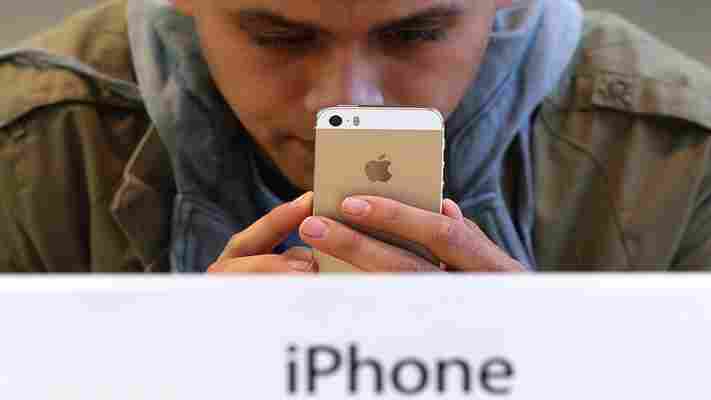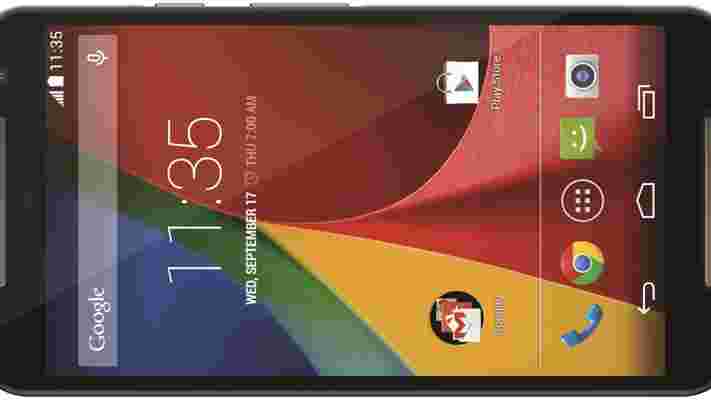Popular Chinese smartphone manufacturer Xiaomi has been teasing a mysterious new product which looked suspiciously like an Apple Magic Trackpad, but today it was finally as a mini wireless router.

The Mi Router Mini comes in an array of colors and is available for only CNY129 ($21). Xiaomi touts it as being up to three times faster than traditional wireless routers, theoretically supporting a speed of up to 1167 Mbps. It is also a dual-band 2.4GHz/5GHz router.
At the same time, Xiaomi also announced today the full launch of its Apple-style wireless router, the Mi Router, which was unveiled in beta last November . The router, which costs CNY699 ($112), also supports a speed of up to 1167 Mbps like its mini version. However, it comes with a 1TB hard disk to let you store files. Xiaomi says that’s enough capacity to download 1000 HD movies, store 40,000 songs, or keep 100,000 RAW format photos.
The third product Xiaomi announced today was a revamped Xiaomi Box, an Android-based set-top box that will cost CNY399 ($64). The set-top box supports 4K Ultra HD content. Xiaomi claims that it has increased its performance three-fold, thanks to an upgraded CPU and graphics processor, making it suitable not only for TV, but for games too.
In the meantime, Xiaomi also revealed that it will be expanding into 10 more countries this year — starting with Malaysia, the Philippines, India, Indonesia, Thailand and Vietnam, followed by Russia, Turkey, Brazil and Mexico. This comes after Xiaomi simplified its Web domain to Miom as it seeks to appeal to an international audience.
Headline image via Hugo Barra/Google+
The iPhone 6 will be one in a million… and that’s the problem
The next iPhone’s announcement date has been set, but I’m worried that it’ll leave me feeling underwhelmed and without a vision for Apple’s future.

Back when the first iPhone was introduced, we weren’t really ready for it. At a time when having a crappy VGA camera and basic MP3 functionality was a relatively novel experience on a phone, Apple came along with a smooth-curved handset that people aspired to own. It was by no means perfect, but it was a crucial moment for the market; following it, previously established giants would fall. Now however, it’s just two different devices in a sea of alternative choices, and not the novelty it once was.
Nonetheless, the story from then on is well known; the iPhone defined a category of mobile. It wasn’t the first smartphone, but it was the first one that millions of ‘regular’ people really wanted to own. That’s the core of Apple’s success: it takes existing ideas and turns them into something people actually want, rather than keeping technology as the preserve of ‘techies’. As a follow-up trick, Apple also defined tablets as we know them today.
Now however, the smartphone market is a completely different beast, and not only does Apple have multiple manufacturers to contend with at home and abroad, but it’s also facing strong challenges in rapidly growing markets like China and India from low-cost domestic manufacturers like Xiaomi.
Contrast iOS with Android; hundreds of hardware makers and thousands of devices, a whole bunch of which are admittedly a bit rubbish. Even so, that’s still tens of thousands of potential temptations for any iPhone user to consider if they ever wanted to change. In the reverse situation, if an Android user was to be tempted to switch to iOS for their primary phone, it could only ever be for the iPhone.
Ultimately, it’s a numbers game; when you have hundreds (or thousands) of different companies working on a spectrum of different devices that run your services, one of those is more likely to come up with ‘the next iPhone’ than Apple. Whether that’s a ‘revolutionary’ smartphone or a different device altogether. As a result, Android has been my go-to primary device for several years. At the other end of the scale to Apple is Samsung, which takes the ‘numbers game’ approach to the extreme; there are more variants of each of its devices than the world could possibly need.
That’s the reason Microsoft is making such efforts to get Windows Phone into the hands of a billion users in developing markets – it knows that locking people in to your services is a huge win for future business. If it can do it now, they’ll be locked in for life as those markets and services mature and develop once again.
There’s nothing I really use that I couldn’t find on a competing platform, but it’s just that Google and Android provide me with all the things that I want and a teasing vision of a potential future – simply, there’s just nothing tempting enough about the alternatives to make me switch. No doubt, there’s a whole mass of people who feel the same about Apple and iOS, but it’s still only playing in one area of the market. It makes premium devices and has achieved global success in developed markets, but that’s not the future battleground for smartphones.
When you’re choosing a smartphone, you’re choosing an ecosystem and you’re doing that for the long-term. Changing the way you do things, quite simply, can be a massive hassle. Plus, what about all those apps you’ve already bought for your [insert OS here] phone/tablet/gaming system? Sure, you don’t have to stick to one platform for all those things, but given the convergence of devices and services, it’s only going to make increasingly more sense in the future.
But is that really a problem? Apple does make beautiful, mostly functional devices. That’s true, but it’s not enough for me – the choice of your next smartphone should be about which hardware and software ecosystems you want to be a part of, not how many megapixels a camera has or how many pixels per inch the screen has. Which provides all the features and services you could foreseeably want? Which company is presenting a more exciting vision of the future to you?
Despite being an Android user, and never having owned an iPhone, I want to want an iPhone 6, really I do.
While the rumor mill churns out reported hardware specs, I’m left wondering who really cares; certain things are a given at this point, surely? It’s going to have a solid processor, a decent camera, 4G, a kick-ass display and a bunch of other stuff we see every year. The point where leaked iPhone hardware rumors stopped being exciting passed a long way back.
I want to hear about the ‘magical’ features Apple has added, exactly how it will change my life and exactly why iOS, and not Android or any other platform, is the future of all my devices – because when you’re choosing, it’s for the long-haul.
The problem for me is that the excitement has gone; the moment has passed. The time when I expected to be blown away by the actual hardware of any new phone has been superseded (temporarily) by an array of wearables and other more futuristic technology.
So what is Apple going to show to convince me that iOS is the future of hardware and software? Is it going to show off an iWatch? Maybe that would be enough to at least get me to think about switching across to iOS, but given reservations about the practical real-world use of smartwatches for me, I suspect not.
Apple may well be increasingly late to that particular market, but that hasn’t hurt in the past and it probably won’t now.
Maybe I’d prefer the Microsoft ecosystem of services and products? Kinect and Smart Glass offer some interesting possibilities, but while not entirely without charm, the thought of living with Windows Phone as my primary mobile OS, Outlook for my mail (and the rest of Microsoft’s services) just doesn’t really appeal. I’m not a die-hard Google fan either, it’s just the best option I see right now. Google Glass is obviously pretty interesting, and its dedicated Android Wear platform for smartwatches shows some intent for the future. What has Apple teased us with lately? Oh yeah, the new iPhone.
Much as I’d like to buy into the idea that Apple will be at the front of all future technical innovation in smartphones, tablets, wearables and as-yet uninvented devices, I just can’t manage it. It won’t let me by not saying anything, so all we hear is boring rumored hardware specs. The smartphone market is still relatively young but when headline features of some phones are that they aren’t made out of plastic any more , you know the excitement has ebbed away.
What Apple does, it does exceptionally . It makes devices that are pleasant to hold, simple [enough] to use and beautifully designed. It’s not just that they look good, they feel good to hold too. Back in 2007 or 2008, and for the next few iterative upgrades, that really was enough, but now it simply isn’t. This year’s launch will be its most important for several years, Apple’s going to have to work harder than ever to convince me that switching ecosystems is ever going to be worthwhile. And for each year that it fails, that job is only going to get harder.
Don’t miss: A bigger iPhone will be better for you, even if you don’t realize it yet
Image credit: Justin Sullivan/Getty Images
Motorola’s Moto G is back with a 5-inch screen, microSD expansion slot and upgraded cameras
Motorola has unveiled an updated version of its best-selling Moto G device that includes a larger display, improved front and rear cameras and extendable storage.

Announced and available to buy today in the UK and US, the new Moto G keeps to the same formula as the original; that is, solid design, mid-range specs, a clutter-free experience and a few custom features. Unlike most manufacturers, Motorola doesn’t put a custom UI on the Moto G, meaning software updates can be pushed to users more quickly.
On that note, the new Moto G will arrive running Android 4.4 KitKat but Motorola said it will get the upgrade to Android L as soon as possible. While it runs a mostly ‘vanilla’ version of Android, there are a few Moto-specific features and apps on board, such as Alert and Assist .
Hardware-wise, the new Moto G has a 5-inch 720p HD screen (up from 4.5-inches), the same 1.2Ghz quad-core processor and 8GB or 16GB of storage. If it’s all sounding a bit familiar, bear with it – the changes might be small, but they’re worthwhile.
For example, there’s now microSD card support (although only up to 32GB cards are supported) and the front-facing camera has been bumped up from a 1.3-megapixel affair to 2-megapixels. It’s a similar story on the rear too – the camera there has gone from a 5-megapixel sensor to an 8-megapixel one.
The audio experience should be improved too, as there’s now a pair of front-facing speakers, rather than just one.
The only real let down in the spec list is the complete lack of 4G support. There will be single and dual-SIM models, but a spokesperson for the company confirmed that if you want to buy a 4G version , you’ll need to look at the older Moto G 4G model.
Alongside the tweaked device, there’s also a selection of different colored shells and cases (sold seperately), however, just because the back panel is removable and there’s a microSD slot, don’t go thinking there’s a user replaceable battery on board, as you’ll be disappointed. Shells will be available from next month at an as yet undisclosed price.
Motorola said that the Moto G is its best-selling smartphone ever, so it makes sense that it would want to continue that momentum with incremental upgrades that actually make a difference to the end user. It helps too that the price is being kept the same as (or lower) than the previous generation, making it around £145 in the UK and around $180 in the US.
